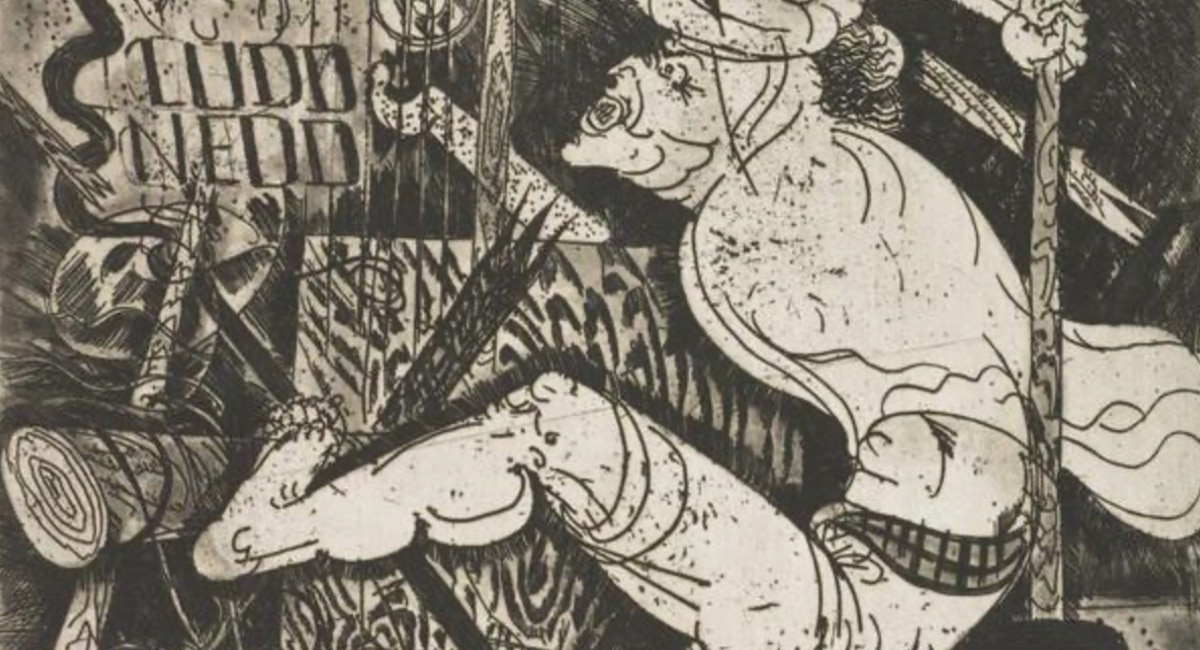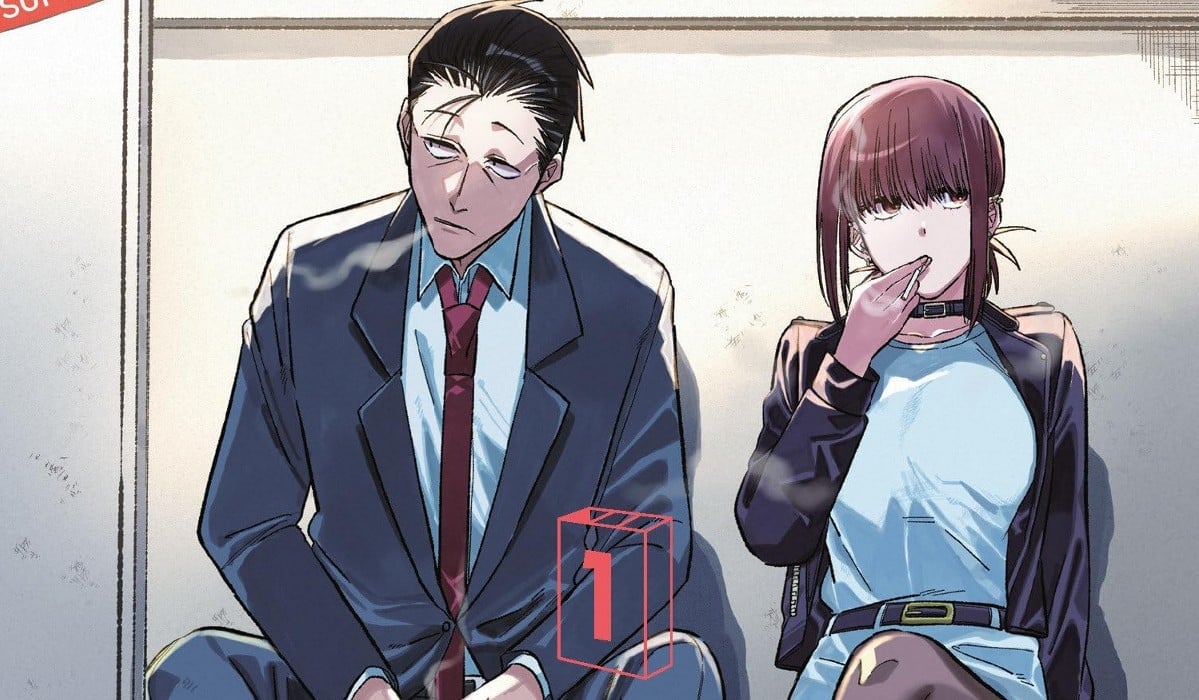With more people reading manga and Webtoons (aka vertical scroll comics) than ever before, Beat’s Bizarre Adventure gives three writers an opportunity each week to recommend some of their favorite books and series from Japan, Korea, and elsewhere. This week we have working manga artists, mysterious spaceships, and, of course, vikings.

Monochrome Days
Writer/Artist: Yosuke Matsumoto
Translation: Jamie Schreiber
Lettering: Jade C.
Editing: Medibang Inc.
Platform: MANGA Plus
“The most gratifying moment is when your work is able to move someone.”
Yosuke Matsumoto’s Monochrome Days may start quietly, but it strikes a powerful chord for any adult who’s given up on a dream for the sake of stability. Written by the creator of The Lady Becomes an Idol, this manga follows two capable working professionals, Hanaichi Fudo and Saori Wakaba, as they reconnect with their creative passions in a world that demands those passions be buried for a 9-to-5 paycheck.
At its core, the story revolves around Hanaichi, an office worker with a once-abandoned gift for art, and his coworker Wakaba, who secretly dreams of becoming a manga artist. When Wakaba asks him to help with her manga project, their collaboration sets off a tender, inspiring exploration of rekindled passion. What starts as a side hobby becomes a shared journey of growth, mutual admiration, and artistic rediscovery. Their chemistry, built not on clichés but on mutual respect and shared ambition, makes the story both emotionally mature and refreshingly grounded.
What sets Monochrome Days apart is its honest portrayal of adulthood. Unlike many stories that glorify chasing your dreams, this manga respects the reality of holding down a job while trying to pursue creative goals. Our protagonists don’t recklessly quit their careers—they learn how to balance their responsibilities with their dreams.
Since this series is about making manga, the artwork itself becomes a narrative device. Matsumoto uses contrasting styles—Hanaichi’s realistic drawings and Wakaba’s more stylized shoujo-inspired art—to reflect the characters’ internal worlds and evolving collaboration. A particularly beautiful moment occurs when Hanaichi tries to adapt to Wakaba’s style, only for her to insist he stays true to his own. It’s not just about technique—it’s about identity, and the art reflects that beautifully.
Some readers compare Monochrome Days to BAKUMAN. Both series are about the passion to create manga. But Monochrome Days may hit older readers like me and my friends on a different level since its characters are adults and it has a subtler, more emotional focus to it. The fan support that saved it from cancellation speaks volumes. This is a manga that resonates quietly but deeply.
Whether you’re chasing a dream or simply remembering one, Monochrome Days is a heartfelt reminder that it’s never too late to pick up where you left off. — Ilgın Side Soysal
 Version 1.0.0
Version 1.0.0Queen Emeraldas
Writer/Artist: Leiji Matsumoto
Translator: Zack Davisson
Lettering: Evan Hayden
Publisher: Kodansha
A woman in black wanders the galaxy for reasons known only to her. She kills bounties mercilessly. Her spaceship, the Queen Emeraldas, has been seen by few. Describing her as mysterious seems redundant. This is a wraith haunting the galaxy; those that meet her only speak of her in hushed tones.
The science fiction world of Queen Emeraldas by Leiji Matusmoto is a wonderfully strange one. Space travel was a dream for his generation. So Matsumoto created a dream-like vision of people moving through space. He draws the far future in exquisite detail with spaceships and massive futuristic skyscrapers but also colony towns that belong in a Western. The spaceship control instruments aren’t too far off from those of naval cruisers. The Queen Emeraldas is a living entity but also looks like a pirate ship crossed with a zeppelin. It’s a vision of the future as rooted in the familiar as the ideas of tomorrow: space romanticism.
A poetry and sense of wonder lives in both the words and images of this manga. There is a grand sweeping sense of awe in every panel. The optimism of the spaceships is swallowed up in fields of stars. The worlds that protagonist Hiroshi Umino visits are overwhelming. Umino wants to travel the galaxy on his own terms with only the vision of Emeraldas to spur him on. Even Emeraldas becomes a larger than life figure with her own mysterious code of ethics as the story progresses. All of the people in this book are rugged individuals conquering space in their own fashion.
But space is a place where failed dreams are as plentiful as the stars. Everyone that Umino meets along the way never reached their goal. It brings a melancholy reality to a book and genre so rooted in fulfilling power fantasies. Their failure though spurs Umino on to achieve his dreams under Emeraldas’s watchful eye.
No one made science fiction comics like Leiji Matsumoto. His vision of space exploration was rooted in dreams rather than hard science fiction. Space as a place where any dream can come true. — D. Morris
 Version 1.0.0
Version 1.0.0Vinland Saga
Writer/Artist: Makoto Yukimura
Translation: Stephen Paul
Lettering: Scott O. Brown
Editing: Ben Applegate
Publisher: Kodansha
Makoto Yukimura is one of the best comic artists working today at telling stories about masculinity. His debut, the science fiction series Planetes, follows an astronaut named Hachimaki, who purges himself of fear and weakness in pursuit of his dreams. Hachimaki goes far, but realizes in the end that space is so much bigger than his own ambitions. Being a man, he learns, doesn’t mean strength; it means getting over yourself.
That same seed lies at the heart of Vinland Saga, Yukimura’s longest series to date and perhaps his magnum opus. Its protagonist is Thorfinn, a teenage killer who fights alongside the viking who killed his father in the hopes that he may one day slay him in battle. He’s a walking and talking power fantasy capable of superhuman feats. But eight volumes into Vinland Saga, Yukimura does something unusual: he defangs Thorfinn, and blows up the comic’s status quo in the process.
Thorfinn trades his swords for ploughshares and toils away as a farm slave. In another series, you might root for Thorfinn to pick up arms again and show his colleagues and superiors who’s boss. But Yukimura instead asks us whether that really would be best for his hero. Sure, he’s great at killing, but is that really good for his soul? What if there was another way for him to live, even if it was far more difficult than murdering everyone in his path?
Thorfinn is just one guy in a sea of them: delicate princes, farming patriarchs, hard-hearted mercenaries. Each comes up against the blade of history and loses some vulnerable part of themselves in the process. Only Thorfinn remains true to his ideals, surviving the slings and arrows of society in pursuit of a world without violence. Vinland Saga reveals itself as the story of a life committed to life.
There are those who prefer the prologue of Vinland Saga in all its excess: spreads of viking hyper-violence, meticulously drawn gore, and feats of exaggerated strength closer to Dragon Ball than real history. It’s after the prologue, though, when the series really comes into its own for me. The way Yukimura ages his characters, and renders their emotional turmoil on the page, is really something else. With Vinland Saga’s ending rapidly approaching in July, I’m excited to see how Yukimura wraps up what may be his life’s work, and what might come next. — Adam Wescott
Follow Beat’s Bizarre Adventure to get weekly manga and webtoon recommendations!



















 English (US) ·
English (US) ·